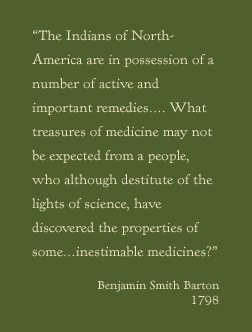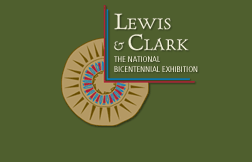
 |
INTRODUCTION TO UNIT Target Grade Level: This unit focuses on how plants are used for medicinal and curing purposes. Students will study the misconceptions of nineteenth-century Euro-American medicine, learn how Lewis and Clark and American Indians used plants to cure and heal, discover how many products we use today derive from plants, create simple herbal remedies, and participate in a culminating project that requires students to create a medicine box or bag from plants. By the end of the unit, students will know that nineteenth century Euro-American and American Indian medical practices shared an appreciation for the value of plants as a source of cures. Students will also know that other nineteenth-century medical practices have long since been debunked, while the study of plants has survived the test of time. Finally, students will know how to pack an herbal medicine bag of their own and how to apply these herbs to common ailments. The unit uses readings, images, quotes, vocabulary, hands-on activities, and student research as teaching tools. Ongoing assessments or tests include oral questions and worksheets. The culmination of the unit is the Performance Assessment Task, which requires students to apply their knowledge and skills regarding plants and curing. Students work both individually and in a group to develop their own survival kit or "medical box" for a hypothetical modern-day trek. [For lessons about Lewis's methods of studying plants, see lessons 1 and 2 in the middle school unit.] Explore Connections to Today for this unit. MAJOR UNDERSTANDING All living things, including humans, depend on plants for their survival. Understanding this dependent relationship promotes sustainable and healthy living habits. ESSENTIAL UNIT QUESTIONS
KEY KNOWLEDGE OBJECTIVES Students will:
KEY SKILL OBJECTIVES Students will:
FORMATIVE ASSESSMENT SUGGESTIONS Ongoing assessments include:
|
|||
 |
 |
 |
 |
